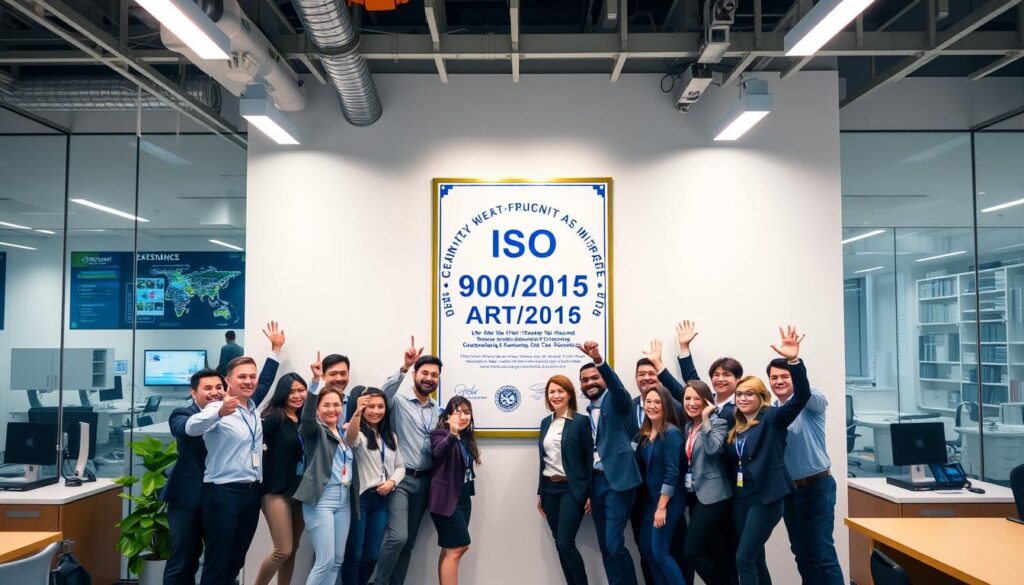HNB Procurement Earns ISO 9001:2015 Certification
Hatton National Bank PLC (HNB) has reached a major milestone in procurement excellence. The bank’s Procurement Functions have earned the ISO 9001:2015 certification from Bureau Veritas. This recognition highlights HNB’s dedication to top-notch quality management.

The certification covers HNB’s IT, Stationery, and General Procurement processes. It shows the bank’s focus on improving operations and supplier relationships. This achievement makes HNB a leader in the financial sector.
HNB continues to prioritize efficiency and service excellence. The bank operates through 254 customer centers across Sri Lanka.
HNB Procurement Function Earns Prestigious ISO 9001:2015 Certification
Hatton National Bank’s (HNB) Procurement Function has achieved ISO 9001:2015 certification. This milestone showcases HNB’s dedication to top-quality and efficient procurement processes. The certification proves HNB’s commitment to excellence in banking operations.
Benchmark of Excellence in Procurement Processes
ISO 9001:2015 is a global standard for quality management systems. HNB’s certification shows its use of international best practices in procurement. This achievement sets a new bar for excellence in the banking industry.
The bank’s dedication to ongoing improvement in procurement is clear. HNB continues to lead the way in banking innovation and efficiency.
Certification Awarded by Bureau Veritas
Bureau Veritas, a global certification body, awarded HNB the ISO 9001:2015 certification. They performed a thorough review of HNB’s procurement processes. The bank met the strict ISO 9001:2015 standard requirements.
This success shows HNB’s focus on quality, risk management, and compliance. The bank ensures top-notch performance in all procurement functions.
Covers IT Procurement, Stationery Procurement, and General Procurement
The certification applies to HNB’s IT, Stationery, and General Procurement processes. This wide coverage ensures high standards across all procurement operations. HNB aligns its practices with global benchmarks for better efficiency.
By improving these processes, HNB boosts its ability to serve customers. The bank continues to provide superior value to all stakeholders.
Commitment to Service Quality and Operational Excellence
HNB’s procurement function has earned the ISO 9001:2015 certification. This achievement highlights their dedication to efficient processes. It also shows their commitment to service quality across procurement operations.
ISO 9001:2015 Certification Reinforces Dedication to Efficient and Standardized Processes
HNB aligns its procurement with ISO 9001:2015 international benchmarks. This ensures high standards of operational efficiency. The certification involved thorough reviews and documentation of processes.
HNB fosters a culture of continuous improvement. They strive for excellence in all aspects of procurement.
Aligns Operations with Rigorous International Benchmarks
The ISO 9001:2015 certification ensures HNB follows global best practices. This guarantees consistency and reliability in procurement processes. HNB shows its commitment to superior service quality through this certification.
Enhances Customer Satisfaction through Robust Quality Management Systems
HNB implements strong quality management systems with ISO 9001:2015. These systems help meet and exceed customer expectations consistently. This approach enhances satisfaction and builds long-term relationships with stakeholders.
HNB prioritizes service reliability and consistency. This positions them as a trusted partner in the financial industry.
Benefits of ISO 9001:2015 Certification for HNB and Stakeholders
HNB’s Procurement Function has earned ISO 9001:2015 certification. This achievement brings many benefits to the bank and its stakeholders. It shows HNB’s dedication to efficient, transparent, and customer-focused procurement processes.
Strengthens Internal Processes and Compliance
The certification bolsters HNB’s internal processes. It ensures all procurement activities follow clear procedures and guidelines. This enhancement improves compliance with regulations and reduces non-conformity risks.
HNB can maintain consistent and reliable procurement operations. This is achieved through robust quality management systems.
Enhances Risk Management and Service Reliability
ISO 9001:2015 certification boosts risk management in HNB’s procurement. The bank can ensure reliable supply chain management by identifying and reducing potential risks.
This proactive approach builds stakeholder confidence. They can trust HNB to deliver products and services without interruptions.
Affirms Position as a Customer-Centric Financial Institution
The certification confirms HNB as a progressive, customer-focused financial institution. It shows HNB’s commitment to high-quality, efficient procurement processes.
This achievement proves HNB’s dedication to ongoing improvement. It also demonstrates the bank’s ability to exceed industry standards in service quality and customer satisfaction.





